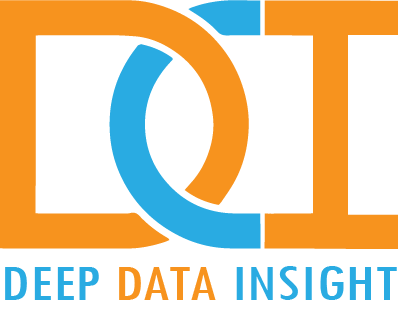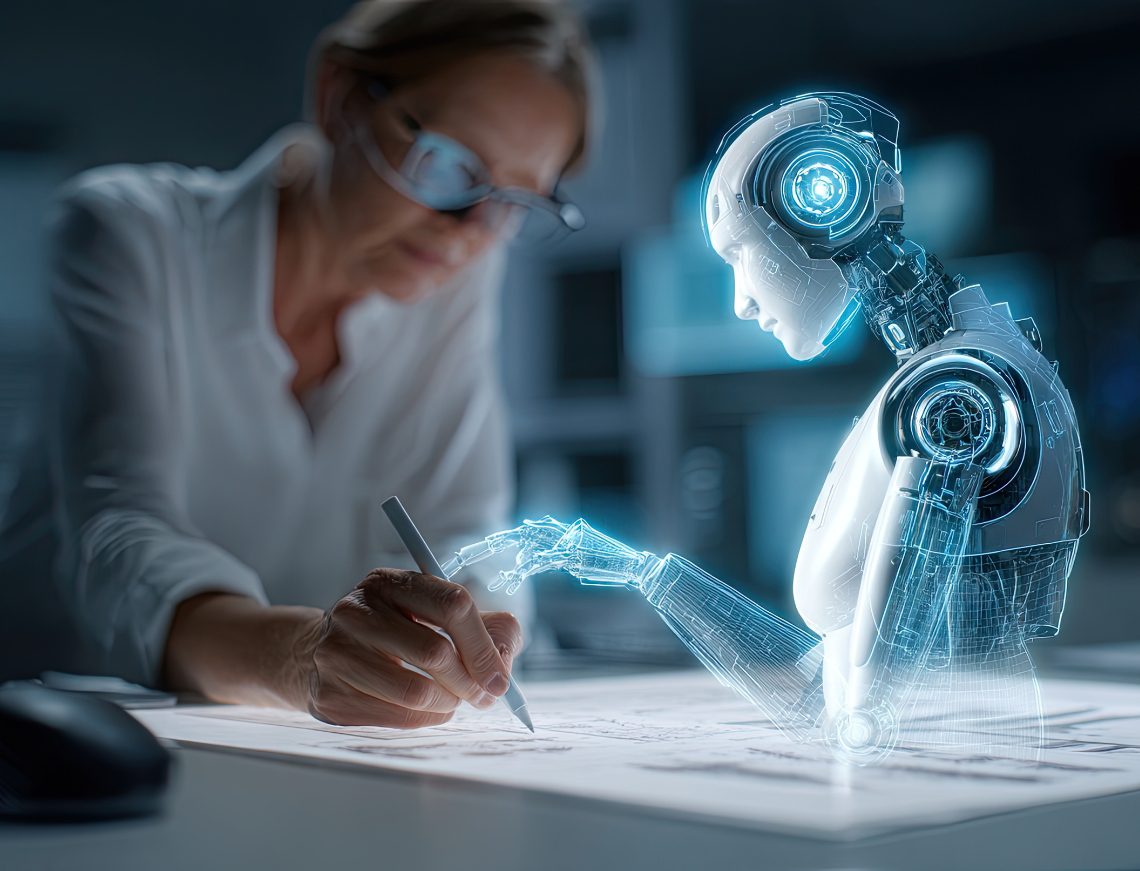Artificial Intelligence (AI) is no longer a futuristic concept reserved for science fiction, it’s a daily reality that’s quietly redefining how healthcare works. From analyzing patient data and predicting disease risks to assisting in surgeries and streamlining hospital workflows, AI in healthcare has become one of the most powerful tools for improving diagnosis, treatment, and patient outcomes.
According to a report by Accenture, the AI healthcare market is projected to reach $188 billion by 2030, with an annual growth rate of over 37%. This surge is driven by the industry’s need for precision, efficiency, and personalized care areas where human expertise meets its limits and machine intelligence fills the gaps.
But how exactly does medical AI turn vast volumes of data into actionable diagnoses? And how does it help doctors make better decisions without replacing them?
This article explores the journey from raw medical data to accurate diagnosis, uncovering how AI is transforming modern healthcare one algorithm at a time.
What Is Medical AI and Why Is It So Important Today?
Medical AI refers to the use of artificial intelligence technologies such as machine learning (ML), deep learning (DL), and natural language processing (NLP) to analyze complex medical data and assist healthcare professionals in clinical decision-making.
In traditional healthcare systems, diagnosis depends heavily on human judgment, experience, and manual processes. Doctors spend hours reviewing lab reports, imaging scans, and patient histories to identify the root cause of a condition. But as patient data multiplies exponentially, manual diagnosis becomes inefficient, inconsistent, and prone to error.
That’s where AI steps in. Medical AI algorithms can process millions of data points in seconds, identifying patterns, correlations, and anomalies that may not be visible to the human eye. For example, a deep learning model trained on thousands of MRI images can detect early signs of brain tumors more accurately than a radiologist not because it’s “smarter,” but because it has seen far more data.
This synergy between human expertise and machine precision is what makes AI in healthcare so transformative.
How AI Transforms Raw Data into Clinical Insights
Healthcare data is diverse and massive; it includes patient demographics, lab test results, electronic health records (EHRs), wearable device data, and medical imaging. The process of converting this chaotic data into usable insights involves several key stages:
1. Data Collection and Integration
Modern hospitals generate terabytes of data every day. AI begins by gathering this information from multiple sources: hospital databases, medical devices, genomic sequences, and even wearable trackers like Fitbits or Apple Watches.
The challenge lies in data fragmentation: every department or institution may use a different system or format. AI-powered platforms use data integration tools and interoperability standards (like HL7 or FHIR) to unify this information into a single ecosystem.
When data is consolidated, algorithms can get a holistic view of a patient’s health, allowing for better diagnostic predictions and treatment recommendations.
2. Data Cleaning and Preprocessing
Raw medical data often contains errors, duplicates, or incomplete entries. For AI to deliver accurate results, it must be cleaned and standardized. This step involves removing irrelevant details, normalizing units (like converting pounds to kilograms), and ensuring consistency in data labeling.
For example, if one system records blood pressure as “120/80 mmHg” and another as two separate values, the AI model needs both data sets to be uniform before analysis.
3. Model Training and Learning
Once clean data is available, AI models are trained using machine learning algorithms. These algorithms learn patterns from historical data for example, how certain symptoms correlate with specific diseases.
Supervised learning models use labeled data (e.g., “image of lung with pneumonia”) to learn associations, while unsupervised models explore hidden relationships on their own. Over time, the model becomes capable of predicting or classifying new data points with increasing accuracy.
4. Clinical Application and Decision Support
After training, AI systems are deployed in clinical settings where they assist doctors in interpreting data, diagnosing diseases, or recommending treatments.
For instance, IBM’s Watson for Oncology helps oncologists match patients with personalized cancer treatments based on molecular and genetic data. Similarly, Google DeepMind’s AI achieved diagnostic accuracy on par with expert ophthalmologists in detecting retinal diseases.
AI in Medical Imaging: Seeing Beyond the Visible
Medical imaging including X-rays, CT scans, and MRIs has long been the cornerstone of diagnostics. But traditional analysis depends heavily on radiologists manually examining each image, which is time-consuming and subjective.
AI revolutionizes this process through deep learning models, particularly convolutional neural networks (CNNs), which excel at image recognition.
A study published in Nature Medicine found that an AI model from Google Health could detect breast cancer in mammograms with 5.7% higher accuracy than human radiologists. These models analyze thousands of images in seconds, highlighting suspicious areas that might otherwise go unnoticed.
Beyond detection, AI tools can:
- Quantify tumor size and progression over time.
- Generate 3D reconstructions of organs for surgical planning.
- Reduce diagnostic bias by providing consistent interpretations.
In the future, AI-powered imaging will likely serve as a co-pilot for radiologists flagging potential issues while leaving the final decision to human experts.
Predictive Analytics: Forecasting Illness Before It Strikes
What if doctors could predict a heart attack before it happens? With AI, that’s no longer a fantasy.
Predictive analytics combines historical data and real-time monitoring to identify early warning signs of disease. For example, algorithms analyzing patient vitals from wearable devices can detect subtle changes in heart rhythm, oxygen levels, or blood pressure all of which could signal potential cardiac distress.
Hospitals are already leveraging AI to predict hospital readmissions, sepsis onset, and treatment responses. According to Johns Hopkins University, AI models have been able to predict sepsis in ICU patients up to 5 hours earlier than traditional clinical methods giving doctors a crucial head start in life-saving interventions.
This capability shifts healthcare from reactive treatment to proactive prevention, saving both lives and costs.
Natural Language Processing (NLP): Decoding Medical Records
A significant portion of healthcare data exists in unstructured text, such as doctor’s notes, discharge summaries, and research papers. Extracting meaningful information from these texts is an enormous challenge and that’s where Natural Language Processing (NLP) comes in.
NLP enables machines to understand and interpret human language. In medicine, it’s used to:
- Summarize patient histories from long reports.
- Identify key medical conditions mentioned in clinical notes.
- Support voice-activated charting for doctors.
For instance, Amazon’s Comprehend Medical automatically extracts disease names, symptoms, and medication details from clinical documents, reducing administrative burden and improving accuracy.
By turning text into data, NLP bridges the gap between clinical documentation and actionable insight.
Robotics and AI in Surgery: Precision Beyond Human Hands
AI-powered surgical robots are enhancing precision, stability, and outcomes in the operating room. Systems like the da Vinci Surgical System combine high-definition 3D visualization with AI-guided robotic arms, allowing surgeons to perform minimally invasive operations with remarkable accuracy.
AI helps in:
- Real-time movement tracking and tremor reduction.
- Analyzing preoperative imaging to plan incisions.
- Guiding robotic instruments during procedures.
In 2022, Johns Hopkins engineers unveiled the Smart Tissue Autonomous Robot (STAR), which performed intestinal surgery with greater precision than human surgeons marking a milestone in autonomous medicine.
While robots won’t replace surgeons, they enhance surgical capabilities, reduce complications, and shorten recovery times.
AI in Drug Discovery: Accelerating the Path to Cure
Developing a new drug can take over a decade and cost billions. AI accelerates this process by analyzing molecular structures, predicting drug interactions, and identifying potential compounds faster than traditional methods.
For example, DeepMind’s AlphaFold cracked the 50-year-old problem of protein folding, predicting 3D protein structures with near-perfect accuracy. This breakthrough allows researchers to design targeted therapies more efficiently.
Pharmaceutical giants like Pfizer and AstraZeneca are integrating AI to shorten drug development cycles, enabling faster innovation in cancer, Alzheimer’s, and rare disease treatments.
Ethical Challenges and Data Privacy in Medical AI
While the benefits of AI in healthcare are undeniable, its implementation raises critical ethical and privacy concerns.
1. Patient Data Protection
Medical AI relies on massive datasets containing sensitive patient information. Ensuring compliance with data protection regulations such as HIPAA (in the U.S.) and GDPR (in Europe) is essential. Data anonymization and encryption are key to safeguarding privacy.
2. Algorithmic Bias
AI models learn from historical data, which can contain biases based on race, gender, or socioeconomic background. If unchecked, these biases can lead to unequal treatment recommendations or misdiagnoses. Continuous auditing and diverse data training are necessary to prevent discriminatory outcomes.
3. Explainability and Accountability
When AI makes a clinical suggestion, doctors must understand why it reached that conclusion. The “black box” problem where algorithms are opaque can erode trust and make accountability difficult. To address this, the field of Explainable AI (XAI) focuses on transparency in model decision-making.
The Future of AI in Healthcare: Human + Machine Collaboration
The future of medicine isn’t about replacing doctors with robots, it’s about empowering them.
AI acts as a second pair of eyes, scanning, predicting, and analyzing data at a scale no human can match. Doctors, in turn, bring empathy, intuition, and ethical judgment qualities machines can’t replicate.
As AI systems evolve, we’ll see more personalized medicine, virtual diagnostics, and remote patient monitoring ensuring healthcare is faster, smarter, and more accessible than ever before.
According to McKinsey & Company, AI could help the healthcare industry save up to $360 billion annually by reducing inefficiencies and improving care outcomes. But its greatest contribution isn’t financial, it’s human: freeing medical professionals to focus on what truly matters caring for people.
Conclusion
AI has already transformed healthcare from a data-heavy industry into a data-driven ecosystem. By merging computational power with human expertise, it’s reshaping how diseases are detected, treated, and prevented.
From radiology rooms to research labs, AI’s fingerprints are everywhere improving accuracy, reducing costs, and extending lives.
The future of modern healthcare lies not in man or machine alone, but in their collaboration a partnership where data meets empathy, algorithms meet experience, and diagnosis meets understanding.
That’s the real power of medical AI turning information into insight, and insight into better health for all.
FAQ’s
How is AI currently being used in healthcare?
AI is used in medical imaging, predictive analytics, drug discovery, virtual health assistants, robotic surgery, and hospital management systems. It supports early disease detection, personalized treatment planning, and administrative automation.
Can AI replace doctors in the future?
No. AI complements doctors by analyzing data and offering diagnostic support. While it enhances efficiency and accuracy, clinical judgment, empathy, and ethical decision-making remain uniquely human responsibilities.
What are the risks of using AI in healthcare?
The main risks include data privacy breaches, biased algorithms, and lack of explainability. Addressing these requires strict data governance, transparency, and regulatory oversight.
What’s the future of AI in diagnosis?
AI-driven diagnostics will become increasingly accurate and accessible, integrating wearable data, imaging, and genomics to offer real-time, personalized health insights.

